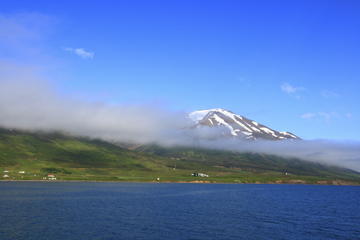Tjörnes Peninsula
TIME : 2016/2/22 11:29:39

Tjörnes Peninsula
Nuzzled between the Öxarfjörður and Skjálfandi fjords, the Tjörnes peninsula could be summed up in two words: birds and fossils. Indeed, the peninsula is famous for its uncharacteristically large population of rock ptarmigan game birds, its colonies of sought-after puffins and a vast selection of other sea birds like purple sandpipers, dunlins, red knots and ruddy turnstones, which nest on the steep cliffs along the eastern coast in the spring and the fall. The Tjörnes peninsula contains numerous sediments rich in Pliocene era fossils, which date back to over 5 million years ago. In opposition to most of Iceland’s landscapes, which are of the volcanic lava kind, Tjörnes’ is sedimentary and consist of several layers of organic deposits.
They are living proof that the Earth’s poles have switched places several times, and they are major witnesses of the climatic changes currently occurring in the North Atlantic. Archeology aficionados should definitely pay a visit to the Fossil Museum in Hallbjarnarstaðir, and drive down the steep dirt road down the beach for a chance to be archeologist for a day!
Far from the birds and the fossils stands the Tjornes Fracture Zone, a submarine volcano located 10 kilometers north of the mainland, which separates the 80-kilometer wide zone of high seismic activity in northern Iceland from the Kolbeinsey Ridge, part of the Mid-Atlantic Ridge.
Practical Info
Húsavík is the largest settlement in the Tjörnes peninsula and is located on its western shore. Traveling around the peninsula is easiest with a car; visitors simply need to drive along route 85.
